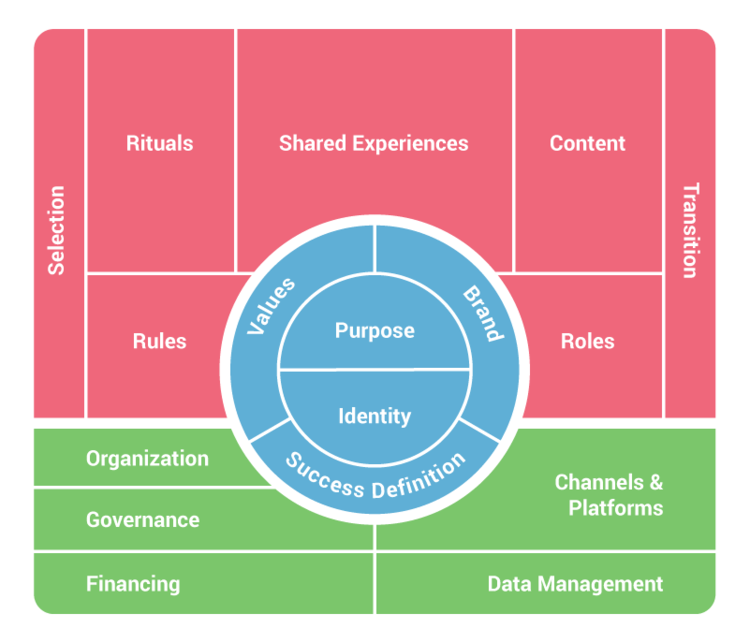Listen and engage in real dialogue. That is what journalism has to do in order to stay relevant for its audience. Here, you learn how community-driven journalism can offer an economical solution to engage with your audience and how to build your own community in four steps:
What is Community Driven Journalism?
Journalism created by and for the people to improve their daily lives. A community is often locally grounded and can encompass a whole region, a city, or a neighbourhood. By engaging in dialogue, the community provides journalists with their ideas or their assessment within a crowd research process. You can use your community’s expertise for fact-checking and to learn more about what they need from journalism.
A community typically consists of a small selection of people but represents the whole audience, your target group. It is impossible for a journalist to talk to a whole city. It is much more realistic to engage in a dialogue with 50 city inhabitants – from those people you can then draw conclusions about the whole city. Although we think of a community as locally bound, you can also build a community nationally or even internationally.
Create Your Community
Before creating your own community, you should be clear about your goals – your personal mission statement. The following questions give you an orientation:
- What is your journalistic product and in which sense is it new and different (Unique Selling Point, USP)?
- What are the problems you want to target in your community?
- What is your specific purpose?
- Which values are important for you and your community?
Try to be as realistic and short as possible with your mission statement. In the next step, think about sustainable financing models. You cannot run a community without any incoming revenue streams. The Business-Model-Canvas, well known in the start-up sphere, can help you with that. After identifying your community, you must reach out to them. Be creative about how you can approach them. Feature your project in the newspaper or radio show you run, issue a call to action via social media or distribute flyers all around the city. You can also involve relevant local stakeholders to make your project public, or – simply but also efficiently, meet the people in the real world at places where you think you can engage with your target audience.

How to Stay in Touch with Your Community:
There are almost no limits on how you can enter into a dialogue with your community. Remember: Make it as easy and as comfortable for them as possible. Be clear whether you want to engage in long-term dialogue, or if you need fast information.
Technology helps us with the engagement process: You can use WhatsApp channels, Facebook groups, surveys on Instagram, threads on Twitter, or start a newsletter. Decide beforehand whether you prefer a group chat, or if you want a one-on-one conversation. Messengers are only one way of community engagement and can be complemented or replaced by telephone calls or regular personal meetings.
Most importantly: Don’t forget to onboard the people formally and explain the meaning and goal of the community. Ask the people interesting questions to keep them motivated. Try to be as personal as possible.
The Pros & Cons of Community-Driven Journalism
It takes a lot of resources to identify, create and successfully moderate a community. Openness, and the willingness to learn and fully engage with people is necessary. Like any other relationship, the bond in a community grows slowly and requires trust and steady effort. That will require calculating more time for your stories and working as a team.
Community-driven journalism reconnects journalists with the real person in the audience instead of looking at key data metrics, and makes journalism more sustainable in the long run by providing the content on the right channels people look for. Journalism driven by a community ensures diverse perspectives, serves democratic participation, and, ultimately, makes journalism more transparent.
Read Further
Community-powered Journalism: A Manual for Growth and Sustainability in Independent News: A manual by Kevin Davis and Mark Lee Hunter, 2020
From start to success – a handbook for digital media entrepreneurs, DW Academy: For this practical guide, DW interviewed 21 media start-ups from 18 different countries.
Resources to Get Started
The Business Model Canvas (BMC): Structure your business model using this template.
The Community Canvas: Identify your community using the Community Canvas.
Crowdfunding for Journalists: The Global Investigative Journalism Network curated helpful tips on how to run a crowdfunding campaign for journalists.
Best Practice Examples
Family Caregiver by CBC Calgary, Canada: Created a community of family caregivers to empower others to share their stories.
The New Naratif, Malaysia: Innovative media outlet from Malaysia, which aims to curate stories from the SEA region and uses a membership, sponsor, as well as gift model for financing.
The Discourse, Canada: Provides community-driven journalism to underserved communities. 50 survivors, tactile.news, Germany: The media think tank engaged with 50 people who survived the coronavirus in 2020.


